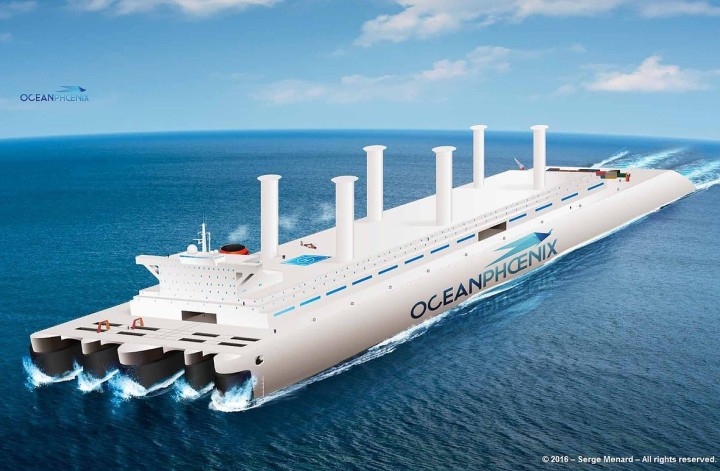A gyre in oceanography is any large system of rotating ocean current, particularly those involved with large wind movements. Gyres are caused by the Coriolis effect; planetary spin or vorticity along with horizontal and vertical friction causing drag, that determines the circulation patterns from the torque of the wind caused curl. The term gyre can be used to refer to any type of vortex in the air or the sea, even one that is man-made, but it is most commonly used in oceanography to refer to the more well known ocean systems.
The North Pacific Gyre has a clockwise circular pattern and is formed by four prevailing ocean currents: the North Pacific Current to the north, the California Current to the east, the North Equatorial Current to the south, plus the Kuroshio Current to the west. It is the site of an unusually intense collection of man-made marine debris, that has come to be known as the Great Pacific Garbage Patch.
In 1997, oceanographer Charles Moore discovered the area this trash-vortex occupies. Consisting of non-biodegradable waste which has been accumulating for at least 50 years it is composed mainly of plastic and comprises 90% of the total volume of waste floating in the world’s oceans. The cleaning of this veritable soup of marine debris is an immense problem.
Also, how to place blame thus responsibility for any cleanup? Third World or less-developed-economically nations might like to say they are not producing this waste which ends up in the oceans but sadly that is not true, a lot of trashy manufacturing is carried out in cheap-to-manufacture places like Bangladesh and Cambodia, besides the world’s factory, China. The economically developed nations that are ordering and distributing and using the waste producing goods are just paying the initial manufacturing etc bills. Frankly, there is no time to spend debating ‘from whence the arrow came’.
One solution comes from mechanical engineer Serge Menard, a Norman Frenchman who has mainly resided in southern France for the past ten years who has always maintained ties with marine industry, first through a fishery owner he had known for twenty years, then through the development of a major initiative in offshore aquaculture with the support of a consortium of industrialists based in Upper Normandy, France. This involvement put him in contact with naval engineers, offshore oil technicians, and marine biologists working in the private sector or at universities. Having acquired very decent knowledge from these experiences, he began to focus on naval and offshore designs intended to protect the oceans, offshore aquaculture, and to support the marine industries of developing third world countries.
In 2003 he designed and patented a supersized ship which functions along the lines of a mobile port, which is named the ‘Sea Angel’. This 460-meter long ship is capable of retrieving stranded supertankers even in adverse weather conditions, thereby averting potential oil spills.
His numerous projects are patented which, while giving the important protection to his hard earned technology unfortunately brings in the money angle to fixing this huge ocean problem.
Meanwhile all this debris is swirling slowly in a “trash vortex” drifting along with the winds and currents. Located 500 nautical miles from the Californian coast, it stretches across the North Pacific, beyond the Hawaiian Islands, and continues to grow almost up to Japan, threatening the coastal groundwater of several continents.
Serge Menard is very much aware of the issues involved and it was the observations of the magnitude of it that served as impetus for the creation of his Ocean Phoenix project. Due to the effects of solar radiation by way of sunlight and ocean currents, the plastic waste is per unit rapidly shrinking into plankton-sized microbeads and that is much more difficult to remove, and in the meantime ocean currents sweep these across broader areas, which they contaminate. Thus he sees it as of utmost importance to eradicate these layers of waste before they can cause further damage.
Given the above, cleaning the oceans is vital and an urgent priority. In his words: “We propose the Ocean Phoenix as a realistic and viable solution: a giant factory-ship ready to meet the greatest environmental challenge of our time, and one which all are invited to discover through their perusal of this document,” referring to a document on his website: http://www.oceanphoenixproject.com/
In conclusion he states: “It is our intention to provide a significant contribution to [averting] this crisis in concert with any organization that shares our objectives and possesses technology capable of contributing to the mission, but we are also prepared to tackle this challenge alone if need be.”










